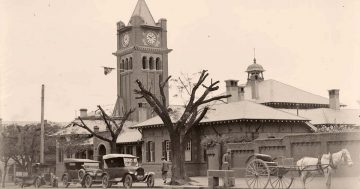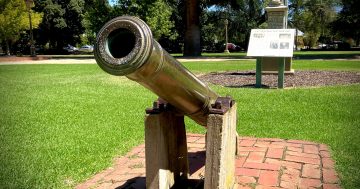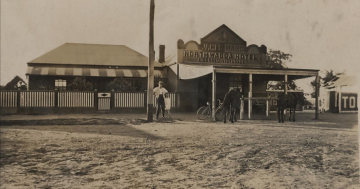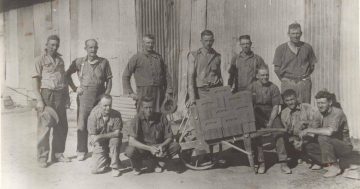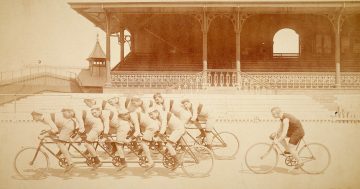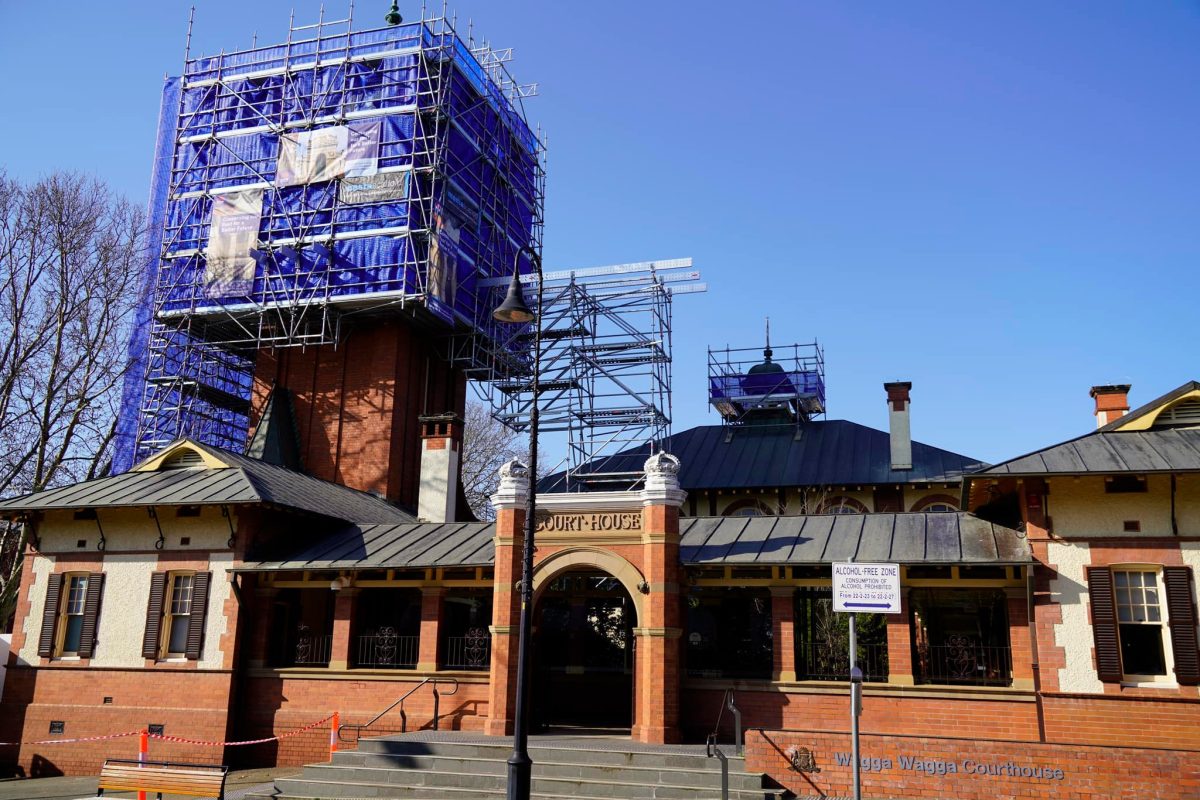
The latest refurbishments will be extensive as weakened sandstone is replaced, the roof repaired and the glazing replaced on the illuminated clock face. Photo: Supplied.
When was the last time you glanced up at the huge illuminated dial on the Wagga Wagga Courthouse to check the time?
In 2023, as watches are replaced by phones or connected by 4G and our clocks are set precisely to the second by some mysterious computer in the sky, it’s easy to forget the giant timepieces that were once a key reference point for citizens looking to sync their pocket watches.
As the Wagga Wagga Courthouse undergoes refurbishment and scaffolding continues to shroud the 121-year-old building’s key features, we thought we’d take a look back at where it all began.
The courthouse itself was the city’s fourth, designed in 1901 by government architect Walter Liberty Vernon and built by Wagga’s Charles Hardy.
While the previous structure had included a clock, it was not illuminated and the city’s leading citizens decided it was time for something grander and more reliable.
A letter from an “old resident” appeared in the Wagga Wagga Express in November 1900 making the case for an “even better clock than the one that Wagga Wagga now possesses”.
“Those who can remember the ‘Day of long ago’, before the advent of the electric telegraph and the heated discussions as to the right time as indicated by watches varying as much as three-quarters of an hour from each other, can best appreciate the advantage of easily obtaining the correct time.”

Wagga’s third courthouse included a notoriously unreliable clock. Photo: CSURA.
In 1901, another correspondent bemoaned the “vagaries of the Wagga town clock” that “are many, and the cause of untold annoyance to the residents. One day it is too fast; another it is too slow”.
In May of the same year, the Express reported that the local contractors had received the plans for the new clock tower that would loom over Little Gurwood Street.
“The dial will be about 60 feet [18.2m] from the ground and the roof 20 feet [6m] higher. Compared with the present tower, the new one will be 15 feet [4.5m] higher,” the Express declared.
“It will be 16 feet [4.8m] square, and have four steps, or floors, the first of which will be used as a Record Room in connection with the court business.
“The tower is to be constructed of double-pressed brick, between the third and fourth floors will be a considerable amount of stone dressing, with a stone coat of arms on each corner, and the roof will be of copper.”
While the article said the work was proceeding at a rapid rate and would be finished in “a few months”, it seems the installation of the clock was slower than expected.

The current courthouse was opened in 1902. Photo: CSURA, colourised by Chris Roe.
Over a year later, in August 1902, the Express reported that “the work in connection with the overhauling of the clock, preparatory to its being placed in the Court-house tower, has practically been completed”.
The delay was caused as workers awaited the arrival of the dials from Sydney, but readers were assured that the installation had begun and would be ticking within a couple of weeks.
“The residents of Wagga have long felt the need for an illuminated tower, and the innovation will be greatly appreciated,” said the Express, adding that discussions were already underway over how long the illumination would extend.
“Some different opinions exist as to the hour when the lights should be turned off, but it will probably be at half-past-11.”
The illumination was provided by gas lanterns until they were replaced with electricity in 1926.
Once in place, it seems there was some wrangling with the State Government over who was responsible for the maintenance of the timepiece.
In 1903, the Member for the Murrumbidgee, James Gormley, raised the matter with the Attorney-General and received a curt reply.
“This clock was erected by the Department of Public Works in the face of repeated protests of two Ministers of Justice,” the letter reads as the AG sought to pass the bill back to the city.
“The clock is for the use of the townspeople, not for the officials of the courthouse.
“I cannot believe that the people of such an important town as Wagga have so little idea of self-help that they cannot even wind and clean the town clock without assistance from the Government.”
The clock continues to be wound every week and is maintained by the Historical Engine Club.
The latest refurbishments will be extensive as weakened sandstone is replaced, the roof repaired and the glazing replaced on the illuminated clock face.







